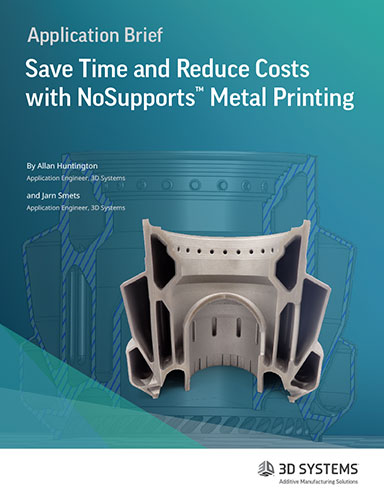Desktop Metal Qualifies 420 Stainless Steel
Desktop Metal single-pass jetting technology enables mass production of end-use parts in 420 stainless steel for applications across medical, defense, aerospace, and consumer products.

Manufacturers can now leverage single pass jetting technology for the mass production of high-strength, end-use parts. Image courtesy of Desktop Metal.
October 22, 2021
Desktop Metal has qualified Grade 420 stainless steel (420 SS) for use on the Production System platform, which leverages Single Pass Jetting (SPJ) technology designed to achieve fast build speeds in the metal additive manufacturing industry. Manufacturers can now leverage SPJ technology for the mass production of high-strength, end-use parts in 420 SS for applications in industries such as medical, aerospace, defense and consumer products.
A martensitic heat-treatable stainless steel, 420 SS is characterized by its strength and hardness as well as its corrosion resistance to the atmosphere, foods, fresh water and mild acids when in a fully hardened condition. 420 SS is a common material used across various applications such as surgical and dental instruments, ball bearings, gear shafts, pump and valve components, fasteners, gauges, hand tools and high-end cutlery.
“Engineers continue to seek out metal additive manufacturing as a leading option to drive innovation in design and manufacturing,” says Jonah Myerberg, CTO and co-founder of Desktop Metal. “We believe our qualification of 420 SS and other high-strength alloys will accelerate the deployment of our AM 2.0 solutions among customers looking to successfully mass produce critical parts at scale.”
420 Stainless Steel Key Applications
Desktop Metal’s materials science team has qualified and fully characterized 420 SS printed on Production System technology that meets MPIF 35 standards for structural powder metallurgy parts set by the Metal Powder Industries Federation. Parts printed in 420 SS on the Production System platform eliminate the use of tooling and minimize material waste, as well as represent a significant decrease in production time and part cost compared to conventional manufacturing methods.
Examples of key applications include:
Medical/Surgical—Locking Articulation Bar
The Production System offers high-resolution binder jet printing, making it a solution for achieving the fine features required of robotic surgical instruments, according to Desktop Metal. For components like locking articulation bars, 420 SS is a desired material for its high hardness and corrosion resistance, the company notes. Since no tooling is required to produce these parts with binder jetting on the Production System, volume production can begin as soon as the design is complete.
Aerospace—Valve Nozzle Adapter
With capacity for thousands of adapters in a single build, the Production System can support the manufacturing of these components in 420 SS. In addition, with no tooling required, numerous adapter geometries can be printed within a single build.
Twin Screw Extruder Mixing Elements
Binder jetting with the Production System simplifies the manufacturing process, enabling large volumes of several mixing elements to be printed in each build, reducing the cost and lead time of production compared to machining, according to Desktop Metal. 420 SS is an essential material in these applications for its high hardness and corrosion resistance, ensuring the elements have a long lifetime and the hardness required for extruding various materials.
3D Print Metal Parts At Scale
The Production System is an industrial manufacturing platform powered by Desktop Metal’s Single Pass Jetting technology. It is designed to achieve speeds up to 100 times those of legacy powder bed fusion additive manufacturing technologies and enable production quantities of up to millions of parts per year at costs competitive with conventional mass production techniques. The P-50 printer is paving the way for the mass production of end-use parts—unlocking throughput, repeatability and competitive part costs. For more information on the P-1, the P-50, and Production System technology, click here.
In addition to 420 SS, the Production System materials portfolio includes nickel alloy IN625, 17-4PH stainless steel, 316L stainless steel and 4140 low-alloy steel, each of which have been qualified by Desktop Metal. The open-system platform also supports several customer-qualified materials, including silver and gold. The company plans to launch additional qualified metals to its portfolio, including tool steels, stainless steels, superalloys, copper, and more. To learn more about 420 SS and the Production System materials portfolio, click here.
Sources: Press materials received from the company and additional information gleaned from the company’s website.
Subscribe to our FREE magazine, FREE email newsletters or both!
About the Author
DE’s editors contribute news and new product announcements to Digital Engineering.
Press releases may be sent to them via [email protected].





